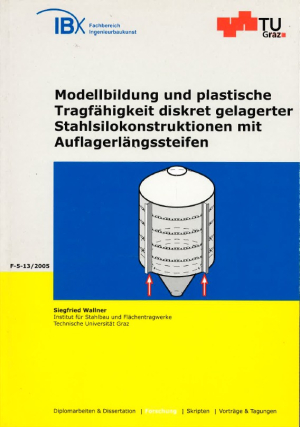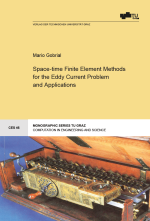Auf Einzelstützen gelagerte dünnwandige Stahlsilokonstruktionen mit durchgehenden Längssteifen weisen auf Grund ihrer Vielgliedrigkeit eine größere Anzahl unabhängiger oder miteinander in Wechselbeziehung stehender Versagensformen auf. Diese Versagensformen sind durch das Erreichen der Grenzzustände der plastischen Tragfähigkeit bzw. der Beultragfähigkeit gekennzeichnet. In einem ersten Schritt werden baustatische Modellbildungsoptionen für isolierte Teiltragsysteme des vielgliedrigen Tragsystems untersucht und dargestellt. In einem zweiten Schritt wird die Vielzahl möglicher plastischer Versagensformen je Teiltragsystem qualitativ identifiziert. Die zugehörigen plastischen Traglasten werden per materiell nichtlinearer numerischer Parameterstudien und zum Vergleich auf Basis vereinfachter Modellbildungen per analytischer Formeln quantitativ bestimmt. Die Verifikation der Resultate erfolgt durch Berechnungen am Gesamtsystem oder an passend isolierten Teiltragsystemen. In einem dritten Schritt werden lineare und nichtlineare Beulanalysen am kombinierten Schaft – Längssteifen – Teiltragsystem durchgeführt. Die Konzeption dieser Arbeit folgt den Leitlinien des neuen Europäischen Regelwerkes EN 1993, Bemessung und Konstruktion von Stahlbauten, Teil 1-6, Festigkeit und Stabilität von Schalen sowie des darauf bezogenen Anwendungsteiles 4-1.
Discretely supported thin – walled steel silo structures with continuous longitudinal stiffeners at the supports exhibit a multitude of structural failure modes which are independent or otherwise interacting with each other. The multitude of possible failure modes is a natural consequence of the multi – component layout of such type of structures. These failure modes either correspond to plastic limit states or to buckling limit states or a combination of both. In a first step, structural modeling options for isolated load – carrying sub – systems of the multi – componential complete structure are investigated and presented. In a second step, the multitude of possible plastic failure modes is identified qualitatively for each of the sub – systems. The related plastic limit loads are determined quantitatively by materially nonlinear numerical parametric studies and, by comparison, by analytic formulae based on simplified kinematical – structural modeling. These load – carrying results are verified by numerical nonlinear analyses of the complete system or, if applicable, of suitably isolated sub – systems. In a third step, linear and nonlinear buckling analyses of the combined sub – system „cylindrical shaft – continuous longitudinal stiffener“ are carried out. The conception of this work follows the guidelines of the new European Standard EN 1993, Design of steel structures, Part 1-6, Strength and stability of shell structures and the related application part 4-1.






